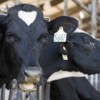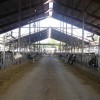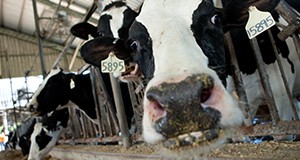Studies have suggested that giving dairy cows supplemental calcium may reduce the incidence of metritis. This study tested this hypothesis with cows at the UF Dairy Unit and found that calcium supplements actually did not benefit postpartum health and are not recommended as means of metritis prevention. This 3-page fact sheet was written by Klibs N. Galvao, Mauricio Benzaquen, and Carlos A. Risco, and published by the UF Department of Veterinary Medicine—Large Animal Clinical Sciences, June 2015.
http://edis.ifas.ufl.edu/vm223
Tag: Uterine Disease (Dairy)
Effect of Anovulation and Subclinical Endometritis on Fertility of Lactating Dairy Cows: Why Are Dairy Cows Not Getting Pregnant: Lack of Cyclicity, Uterine Disease, or Both?
 Virtually all Holstein dairy cows have the first wave of follicle growth starting two weeks postpartum, with about 30% of these cows ovulating within 21 days in milk. This 3-page fact sheet presents the results of a recent paper that evaluated the individual and combined effects of anovulation and subclinical endometritis on reproductive performance of dairy cows. Written by Klibs N. Galvão and Achilles Vieira-Neto, and published by the UF Department of Veterinary Medicine-Large Animal Clinical Sciences, May 2014.
Virtually all Holstein dairy cows have the first wave of follicle growth starting two weeks postpartum, with about 30% of these cows ovulating within 21 days in milk. This 3-page fact sheet presents the results of a recent paper that evaluated the individual and combined effects of anovulation and subclinical endometritis on reproductive performance of dairy cows. Written by Klibs N. Galvão and Achilles Vieira-Neto, and published by the UF Department of Veterinary Medicine-Large Animal Clinical Sciences, May 2014.
http://edis.ifas.ufl.edu/vm222
Should Genetics Be Blamed for High Incidence of Uterine Disease in Dairy Cows?
 Uterine diseases are highly prevalent in high-producing dairy cows. They have been associated with decreased pregnancy per artificial insemination (AI), extended interval to pregnancy, increased culling, and economic losses. This 3-page fact sheet presents the results of a recent paper that examined how alterations on the TLR genes, which control innate immune response, affect the susceptibility to uterine diseases. Written by Klibs N. Galvão, Christopher M. Seabury, and Pablo Pinedo, and published by the UF Department of Veterinary Medicine-Large Animal Clinical Sciences, May 2014.
Uterine diseases are highly prevalent in high-producing dairy cows. They have been associated with decreased pregnancy per artificial insemination (AI), extended interval to pregnancy, increased culling, and economic losses. This 3-page fact sheet presents the results of a recent paper that examined how alterations on the TLR genes, which control innate immune response, affect the susceptibility to uterine diseases. Written by Klibs N. Galvão, Christopher M. Seabury, and Pablo Pinedo, and published by the UF Department of Veterinary Medicine-Large Animal Clinical Sciences, May 2014.
http://edis.ifas.ufl.edu/vm197
